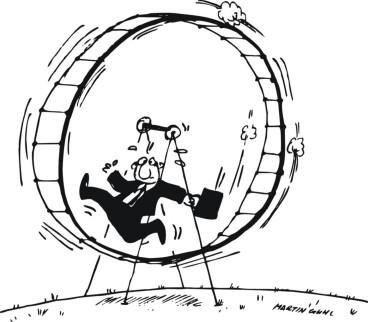Convert, De-convert, Re-convert…The stock market’s recent drop has no immediate tax impact on traditional or Roth IRAs invested in stocks and ETFs. That’s because neither losses nor gains are recognized within IRAs. However, in today’s market, if there is a silver lining, there are some tax strategies for IRA owners to consider:
1. Converting traditional IRA funds to a Roth IRA. Regardless of adjusted gross income (AGI) and filing status, taxpayers can convert traditional IRAs to Roth IRAs. Keep in mind that the amount converted is subject to tax as if it were distributed from the IRA, but generally isn’t subject to the 10% early distribution tax.
Opportunity: A market decline gives investors a chance to convert a traditional IRA to a Roth IRA at a much lower tax cost than would have been possible when stock market values were high.
If you want to remain in the market for the long term, or expect to be in a higher tax bracket in the future, consider converting money in traditional IRAs invested in stocks that have declined in value into Roth IRAs.
2. Recharacterizing a conversion from regular IRA to Roth IRA. An investor who earlier this year—when the market was higher—converted from a traditional IRA to a Roth IRA will wind up with an artificially high tax bill if the market doesn’t recover quickly and he leaves things as is.
Fortunately, the taxpayer can treat the conversion as if it had never been made, and avoid tax on evaporated income, by “recharacterizing” it. This involves transferring the converted amount from the Roth IRA back to a traditional IRA.
Example Earlier in 2015, Jim converted a traditional IRA to a Roth. At that time, the regular IRA had a $50,000 balance. Jim’s Roth IRA currently is worth only $40,000. To avoid paying tax on $10,000 of evaporated income, Jim can recharacterize the Roth IRA as a traditional IRA.
The recharacterization must be done by the due date (plus extensions) of the tax return. So, if you converted a traditional IRA to a Roth IRA this year, consider recharacterizing it before April 18, 2016, or October 17, 2016 if you get a six month extension to file your 2015 return.
3. Reconverting a traditional IRA to a Roth IRA. If assets were converted from a traditional IRA to a Roth IRA, not only could the investor transfer the amount back to a traditional IRA in a recharacterization, (see #2) but she may also later reconvert that amount from the traditional IRA to a Roth IRA.
Remember, before reconverting, you must wait until the later of: (1) the beginning of the next tax year; or (2) 30 days after the IRA was recharacterized.
Please let us know if you have any questions or to discuss your specific situation..


